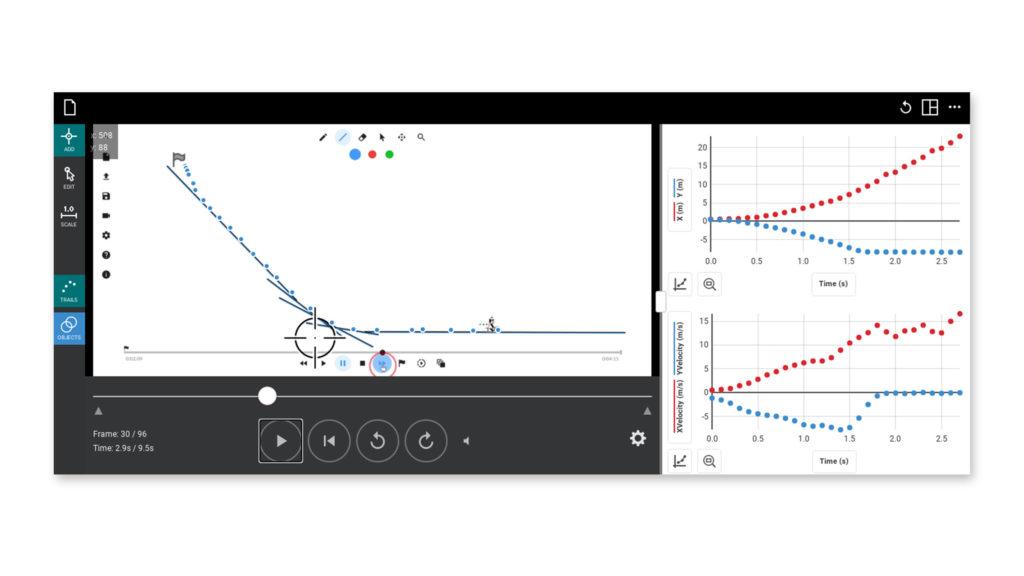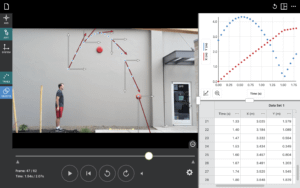When school campuses closed because of COVID-19, physics teacher Erik Gillman wanted to find a way for his AP Physics students at Gilbert Classical Academy to continue to engage in data analysis while they were learning remotely. By incorporating a popular simulated physics game with
Vernier Video Analysis™, he created “The Line Rider Rides Again!” project.
Engaging Students
As detailed in the investigation, Line Rider is an online game created in 2006 by a Slovenian student that later went on to become an internet phenomenon. While playing the game, students draw lines to create a track in which a character rides down on a sled. The goal is to create a smooth track that prevents the character from falling.
In “The Line Rider Rides Again!” students—either working individually or in a small virtual group—are tasked with reverse-engineering the physics of Line Rider. The main objectives are to determine the acceleration of gravity and air resistance and to determine the coefficient of kinetic friction between the sled and snow. Students use Vernier Video Analysis specifically to examine motion and study the efficacy of their tracks by creating position and velocity graphs.
“I was ecstatic when I first found out that Vernier Video Analysis was available for use on Chromebooks,” said Gillman. “It allows students to easily engage in data analysis on the devices we most frequently use in class and is a central component of the Line Rider investigation.”
Physics in Action
With the Vernier Video Analysis app, one of Vernier Software & Technology’s remote learning solutions, students can insert a video with recorded motion, mark points to track the object in motion, and set the scale of the video. The app generates accurate and visually rich graphs reflecting recorded motion that students can analyze as part of the scientific discovery process.
“With Video Analysis and the Line Rider investigation, students learn about gravity, air resistance, and friction in a really fun way,” said Gillman. “By analyzing data, students are able to really home in on these concepts, as well as see if their own results were reasonable.”
Adjusting to Remote Instruction
“Since students had to complete this investigation virtually, I made it a bit more scripted than usual to help alleviate any confusion,” added Gillman. “Students could also participate in virtual office hours and ask questions and receive guidance. We’d even share our screens so that we could collaborate and problem solve together. The overall experience was very positive.”
During remote learning, Gillman made the investigation optional for students and graded them primarily on being able to complete the process correctly rather than accurately, although this will likely be adjusted when he implements the investigation into future in-person classes. Students were also able to earn bonus points at the end of the activity if they created an “awesome” track to share with their classmates.
“The fun part about Line Rider is the creativity part—students can make tracks with jumps and loops, add music to the rides, and more,” said Gillman. “If students incorporated a really cool trick at the end of their bonus track, they got extra credit!”
About the Educator
Erik Gillman
Gilbert Classical Academy
Gilbert, Arizona
Erik Gillman has been teaching for 19 years—with the last eight years at Gilbert Classical Academy. Prior to becoming an educator, he was a process and test engineer at Intel.


